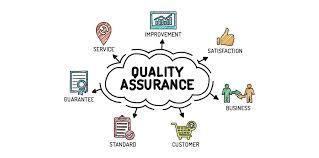Cost vs. Quality: The Real Value of Software Quality Assurance Services
Software Quality Assurance Services

In today’s hyper-competitive digital economy, businesses are under constant pressure to deliver software faster, at scale, and without compromising quality. Yet, many organizations still hesitate when it comes to investing in Software Quality Assurance Services (SQAS). The perception that quality assurance is merely an “added cost” rather than a strategic investment often leads companies to underfund this critical function.
The truth, however, is far from this misconception. Numerous industry studies show that the cost of quality assurance is minimal compared to the cost of failures after release. In fact, research indicates that every dollar invested in quality assurance efforts can save as much as $100 in defect fixes post-release. This staggering ratio highlights how SQA not only reduces overall costs but also directly influences customer satisfaction, brand reputation, and long-term business success.
Importance of Software Quality Assurance Services
Software defects are not just technical glitches; they are business risks. When a bug reaches production, it can cause service interruptions, data breaches, financial miscalculations, or even compliance violations. For example, a leading global bank once lost millions in trading errors due to a single software defect in its risk-management system. Similarly, in the e-commerce world, bugs in checkout workflows can result in cart abandonment, lost sales, and erosion of customer trust.
The financial impact is clear:
- Fixing a defect during the requirement or design phase is relatively inexpensive. Yet, the same defect fixed during production can cost ten times more—or even higher—depending on the industry.
- Poor quality brings customer support overhead, SLA penalties, brand reputation damage, and legal risks.
- Time spent fixing critical production issues is time not spent innovating or building differentiating features.
Ultimately, poor quality is far more expensive than ensuring quality from the start.
SQA as an Accelerator, Not a Bottleneck
One of the most common objections to strong QA processes is the concern that testing slows down development. However, modern SQA practices and tools achieve the opposite: they accelerate delivery while improving quality.
- By catching defects early in the software development lifecycle, teams avoid time-consuming bug hunts later.
- Agile and DevOps-driven testing approaches—particularly continuous integration (CI) and continuous testing—enable faster, more reliable releases.
- Delivering high-quality software consistently builds consumer trust and brand loyalty, which often translates to competitive advantage.
Instead of viewing QA as a bottleneck, forward-looking companies now see it as a catalyst that drives faster innovation.
The Booming Global Market for SQA
The growing demand for reliable and secure software is pushing the global SQA services market into rapid expansion. Industry forecasts project the market to reach $7.8 billion by 2033, fueled by advances in automation, AI-driven solutions, and cloud-based testing services.
This growth reflects not only the increasing complexity of software ecosystems but also the recognition that poor software quality is a top-line business issue. From fintech firms managing billions of dollars in real-time transactions to healthcare applications ensuring patient safety, software failures are simply too costly to ignore.
The Role of AI and Automation in Modern SQA
Traditional manual testing approaches alone cannot keep up with today’s pace of development. To bridge this gap, organizations are increasingly turning to AI-powered and automated testing frameworks that bring unprecedented accuracy and scale.
Key contributions of AI and automation in SQA include:
- Defect Prediction: AI models can analyze historical data to identify modules most prone to defects, enabling proactive focus.
- Repetitive Task Automation: Tests that once required hours of manual execution can now run autonomously across multiple environments and devices in minutes.
- Reduced Human Error: Automated scripts remove inconsistencies caused by manual efforts, especially in regression testing.
- Intelligent test dashboards provide actionable insights for faster release decisions.
It’s no wonder that 89% of organizations now report trusting AI-driven tools for critical release decisions. Intelligent automation is no longer an add-on; it has become central to modern SQA strategies, allowing teams to test more, test faster, and test smarter.
Balancing Cost and Quality: A Strategic Mindset
Rather than treating cost and quality as two opposing forces, successful organizations understand the importance of achieving balance. Quality assurance, when done right, reduces costs in both the short and long term.
Here are ways businesses can achieve this balance:
- Not every feature carries equal business risk. Focus QA efforts heavily on mission-critical areas with the highest potential impact while scaling back on low-risk components.
- Automated test suites pay for themselves quickly by reducing repetitive manual effort and accelerating release cycles.
- Outsourcing to specialized SQA service providers gives organizations access to cutting-edge tools, domain knowledge, and best practices that may be expensive to build in-house.
Ultimately, it’s about aligning QA strategy with business objectives, ensuring that quality contributes directly to customer satisfaction and financial performance.
Conclusion
The longstanding debate between cost and quality is a false dichotomy. The reality is that quality is not a cost center—it’s a cost saver. Investing in robust Software Quality Assurance services practices prevents losses, protects reputations, and drives long-term competitive advantage.
Why struggle with expensive last-minute fixes when you could spot bugs early and stay ahead of schedule?
Key Takeaways
- Poor software quality costs businesses millions annually, far more than the upfront investment in SQA.
- SQA is a strategic investment, not just an operational necessity.
- AI and automation are reshaping the QA landscape, enabling faster, smarter, and more reliable testing.
- The global SQA market is expanding rapidly, underscoring its importance across industries.
At CodeSuite, we integrate QA engineers into your sprint planning from the very beginning. This means catching issues before coding even starts, when fixing them is faster and far cheaper.
Did you know that 70% of software defects originate during the design phase according to Capers Jones, 2025? By addressing them at this stage, we help you avoid expensive late-stage rework and keep your project moving forward. With Shift-Left Testing, you’ll reduce bottlenecks, deliver high-quality software, and focus on what matters most: creating a product that users adore.
CodeSuite has helped companies save up to 50% on development costs by embracing proactive Software Testing Services. We specialize in SQA, Software Quality Assurance Services, and continuous testing solutions specific to your unique business goals. Contact us today, and let’s build a plan that cuts hidden costs, protects your reputation, and grows your business. Are you ready to leave costly bugs behind.




